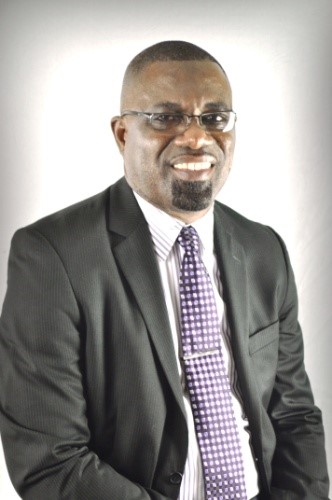
Director’s Message – August 2019
The Tenth International AIDS Society (IAS) Conference on HIV Science which was held in Mexico City on the 21-24 July 2019 provided a space for researchers to showcase advances in HIV Science. As expected presentations, panel discussions, and posters on HIV prevention initiatives, PrEP, Treat All, stigma and discrimination and sustainability dominated the conference. However, for me, the key takeaway message was that ending AIDS as a public health threat requires bold political action to address policy and legislative changes for eliminating stigma and discrimination and increasing and maintaining national investment in HIV.
Stigma and discrimination continue to impede access to prevention, treatment and care services particularly among key populations, inter alia men who have sex with men, transgender persons, sex workers, persons who use drugs, people with disabilities, women and girls and indigenous people. Stigma remains a structural barrier to ending AIDS and a key component of the response. The conference brought this into sharper focus by providing a preponderance of evidence that people who experience stigma are at an increased risk of HIV. One presenter stated that stigma is a fundamental determinant of health, and health equity and suggested that stigma undermines three key determinants of health: access to resources; access to social support; and access to psychological and behavioural responses through exclusion. In relation to HIV stigma, one moderator queried whether it is different from other types of stigma. Indeed, it is, and there is a fundamental difference. The way that HIV stigma is felt is based on moral judgment. It is unique as it is associated with sexual, drug use and racial biases which people see as ‘the other’. It is also seen as contagious.
From my more than two decades of work and research on HIV stigma, I am convinced that real change can only come about through interpersonal engagement with people who stigmatise. Individuals can only begin the process of change if they can internalise how their stigmatising attitude perpetuates stigma and how this impacts the lives of people who experience stigma. One of my mentors, Bonita Harris, a Guyanese educator, has held the view that stigma work is hard work. It is where the rubber hits the road. Such work must facilitate self-awareness, which allows people to reflect on how they felt when they were seen or treated as ‘the other’. It is only then that they can begin the process of seeing themselves in the experiences of others and to move from intolerance to genuine acceptance of the other irrespective of who he or she is or his or her values.
Stigma is complex, however, if we focus on its complexity, we will fail to act. To act, we must first hold ourselves accountable by our language and how we describe language as cultural. One presenter focused his presentation on policy as a structural determinant of HIV risk in the context of persons who use drugs. He cited the confiscation of syringes from persons who use drugs and how this increases their risk and vulnerability to HIV when they feel forced to share syringes. He also cited police confiscation of condoms from sex workers and its corresponding risk to those women and men. He argued that policy and criminal justice reform is an HIV prevention imperative and that punitive legislation distances people from testing and treatment as it criminalises while having no positive impact on preventing HIV infection. Punitive and non-protective laws are associated with HIV infection. He advocated for evidenced-based and human rights affirming policies to be fully part of the HIV response and emphasised that policy commitment is required for sustainability of key populations model of prevention, treatment, care and support services.
Political commitment is required for key populations provision and access to services. Strong leadership of ministries of health and policymakers were cited as game changers in Thailand that ensured key populations model of care. The Caribbean Regional Strategic Framework on HIV and AIDS (CRSF) 2019-2025 includes a Strategic Priority Area (SPA) – Critical programmes and social enablers for creating an enabling environment. It outlines several strategies, including design and implementation focused strategies to target identified loci of stigma and discrimination directed towards key populations, People living with HIV (PLHIV) and youth. This SPA also responds to the evidence that a multipronged approach is required for achieving an enabling environment. Another strategy is to design, resource, evaluate and scale-up cross-sectoral approaches to pilot comprehensive sexuality education programmes in schools in recognition that our adolescents are growing up without the correct information and skills to reduce their risk and vulnerability to HIV and other social ills.
Under this SPA, the CRSF calls upon countries to intensify and institutionalise cross-sectoral collaboration to implement social protection programmes to address socio-economic drivers of HIV, with emphasis on gender-based violence and vulnerability associated with migration and population movement.
The SPA also recognises the critical need to advocate for sustained domestic resourcing for HIV, health and social protection programmes that deliver comprehensive, differentiated, non-discriminatory services that reach key populations, including the increasing number of migrants in the region.
If the Caribbean is to achieve the goal of the CRSF, that is, to reduce new HIV infections, address health disparities and social inequities, and contribute to the achievement of sustainable health and development, the region requires bold political action for increased investment to address stigma. This would enable us to accrue significant gains across the prevention and the treatment cascade.
UNAIDS 2019 HIV Global Report informed us that the Caribbean is required to have another 106,000 persons on treatment and achieving viral suppression if the Region is to attain the 90-90-90 Targets by the end of 2020. Countries must therefore focus resources to implement strategies to target identified loci of stigma and discrimination directed towards key populations. This can only be done through bold political, as well as technical leadership and innovative action.
